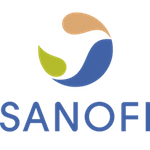Perseverance in Rare Diseases at Sanofi
Each person living with a rare disease has a different experience and, sometimes, drastically different needs. Symptoms and complications can be difficult and even life-threatening with few, if any, treatment options available.
“Historically, Sanofi has been a trailblazer in providing treatments for people with rare diseases, but it is far too early to declare victory in the fight against these disorders. For us, this battle is both a marathon and a sprint,” said John Reed, Executive Vice President, Global Head of Research & Development at Sanofi. “We must focus on developing the next generation of potential treatments while we concurrently investigate therapies for rare diseases where treatment options do not currently exist. Patients inspire us to persevere in our efforts.”
Searching for a treatment for acid sphingomyelinase deficiency (ASMD)
ASMD is a rare, progressive and potentially life-threatening lysosomal storage disorder (LSD) that results from the deficient activity of the enzyme acid sphingomyelinase (ASM). This enzyme is normally found in special compartments within cells called lysosomes and is required to breakdown lipids—a fatty substance in the cell—called sphingomyelin. If ASM is absent or not functioning as it should, sphingomyelin cannot be metabolized properly and accumulates within the cell, eventually causing cell death and the malfunction of major organ systems.
While there are currently no treatments available for patients living with ASMD, Sanofi scientists continue to leverage their expertise in LSDs to find one. Patients like J.J., who are living with these difficult conditions, inspire our work in the lab and beyond.
Investigating next-generation therapies
The first ten years of Sanofi’s research in rare diseases focused primarily on finding a treatment for one type of LSD called Gaucher disease. Its success established Sanofi’s leadership in the rare disease community. Over the next two decades, the company expanded its focus to include other LSDs including Fabry disease, Pompe disease, and Mucopolysaccharidosis I (MPS I).
However, it did not stop once a treatment was discovered.
“We don’t retire with success. Instead we ask ourselves how we can do more,” said Sebastien Martel, Global Head of Rare Diseases. “Our perserverance is exemplified by our exploration of potential next-generation therapies for Pompe, Gaucher and Fabry. We are constantly challenging the status quo by asking how we can best support the needs of patients with medicine and beyond.”
Providing support beyond treatment
Living with a rare disease can be isolating and lonely, so it is equally important to support each patient by connecting them and their families to each other and to advocacy organizations.
“As we develop potential new therapeutic options for people living with rare diseases, the role of patient advocacy organizations is core to our mission and crucial to our success. From imparting their expertise and sharing their experiences to shaping and participating in clinical trials, the patient advocacy community’s contribution to our work is invaluable,” said Pamela Graves-Moore, Global Head of Public Affairs and Patient Advocacy for Rare Diseases at Sanofi. “We are grateful for the rare disease patient community’s contributions, trust and cooperation.”
Creating a sisterhood of support was always an important way of coping for sisters Christy, Heather, Michelle and Tami, who face the challenges of living with Fabry disease. “We could see the impact of Fabry disease on our father and uncles, and we were able to share information and support with each other–and that made a tremendous difference,” said Christy.
Her sister Tami adds, “You learn very quickly that Fabry disease affects every part of your life. Whether it is being a wife or mother or having a career, there are certainly days when I feel like I dropped the ball.”
Sanofi believes in the power of supporting health from the molecular level to emotional and social wellness. With approximately 350 million people living with a rare disease across the globe, this task can seem daunting. Sanofi’s approach is simple—one patient at a time; one family connected to necessary resources; one physician educated; one advocacy organization supported; and one legislator informed.

